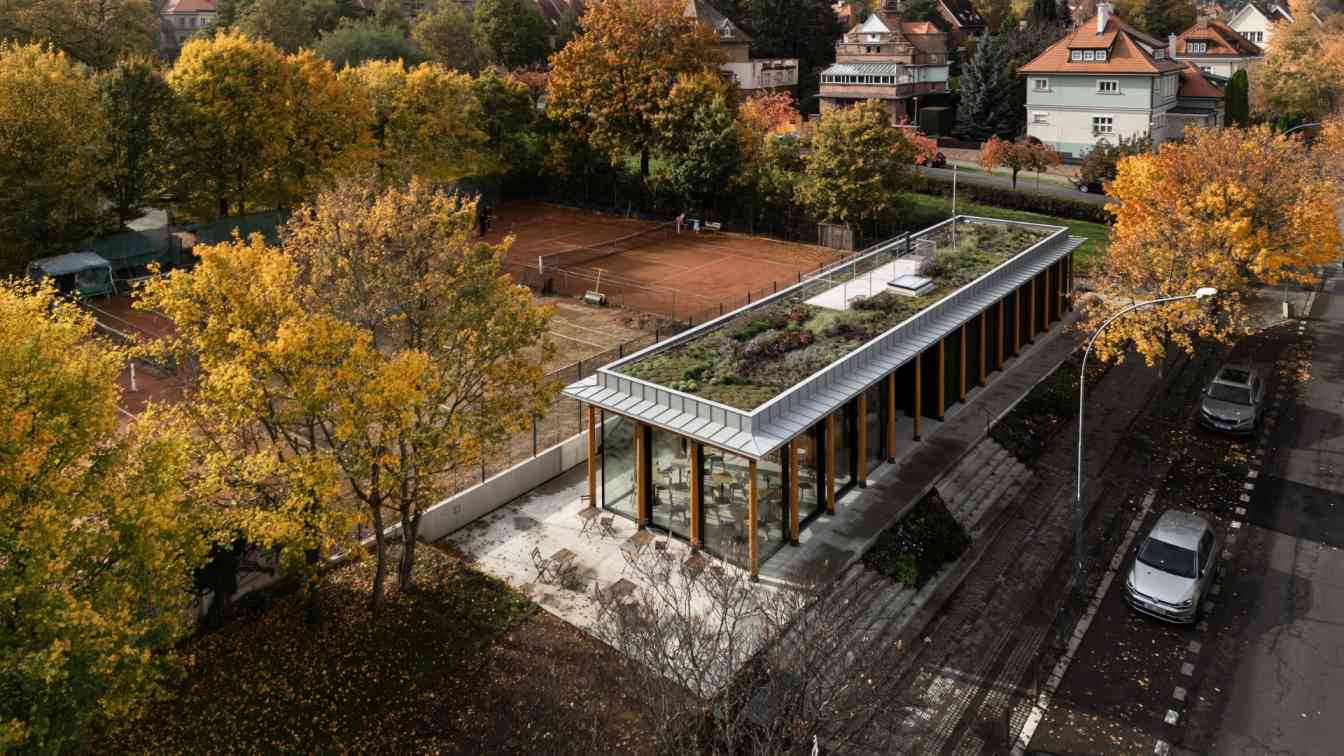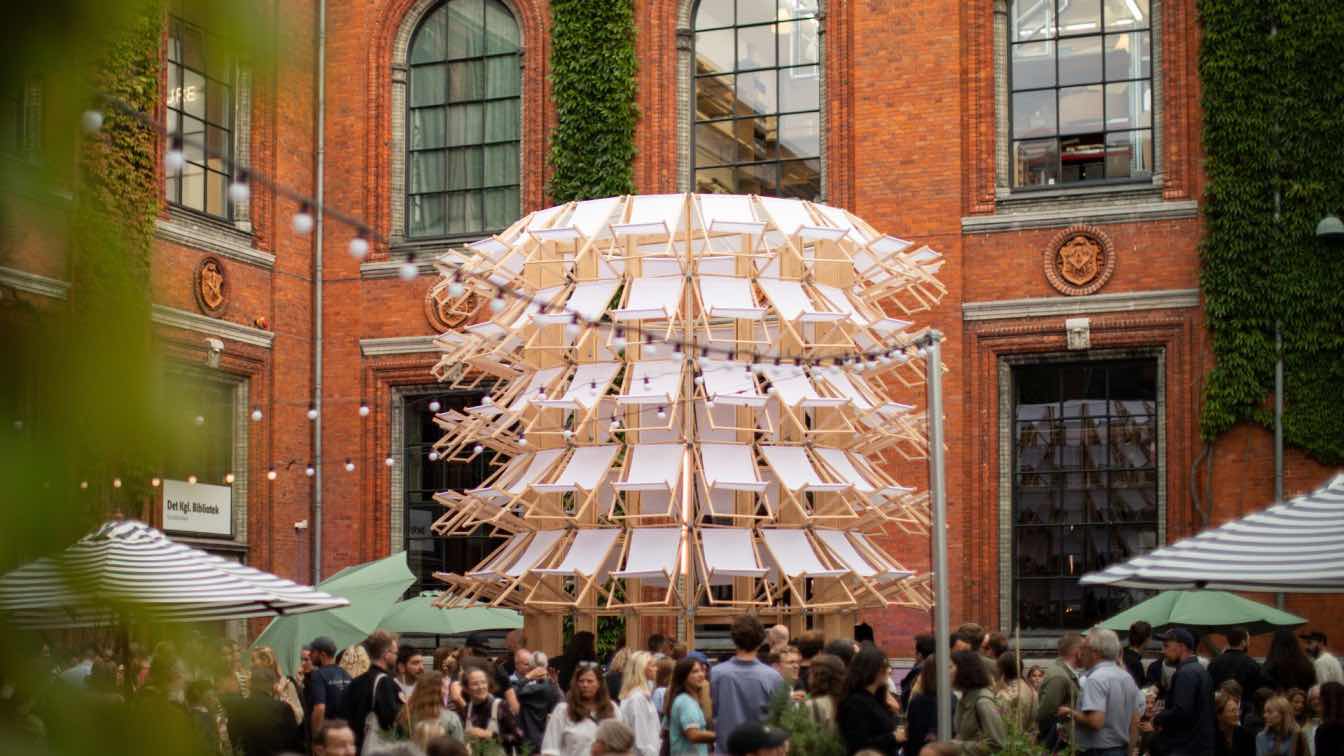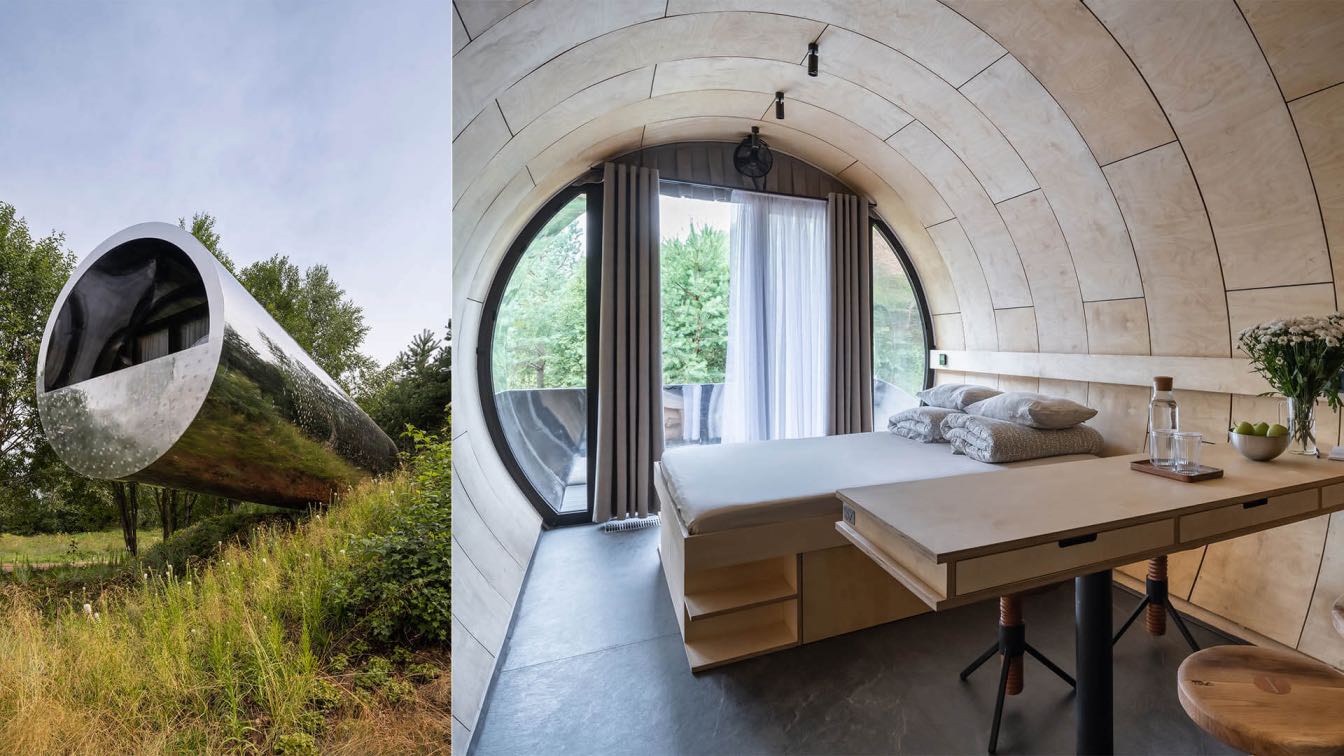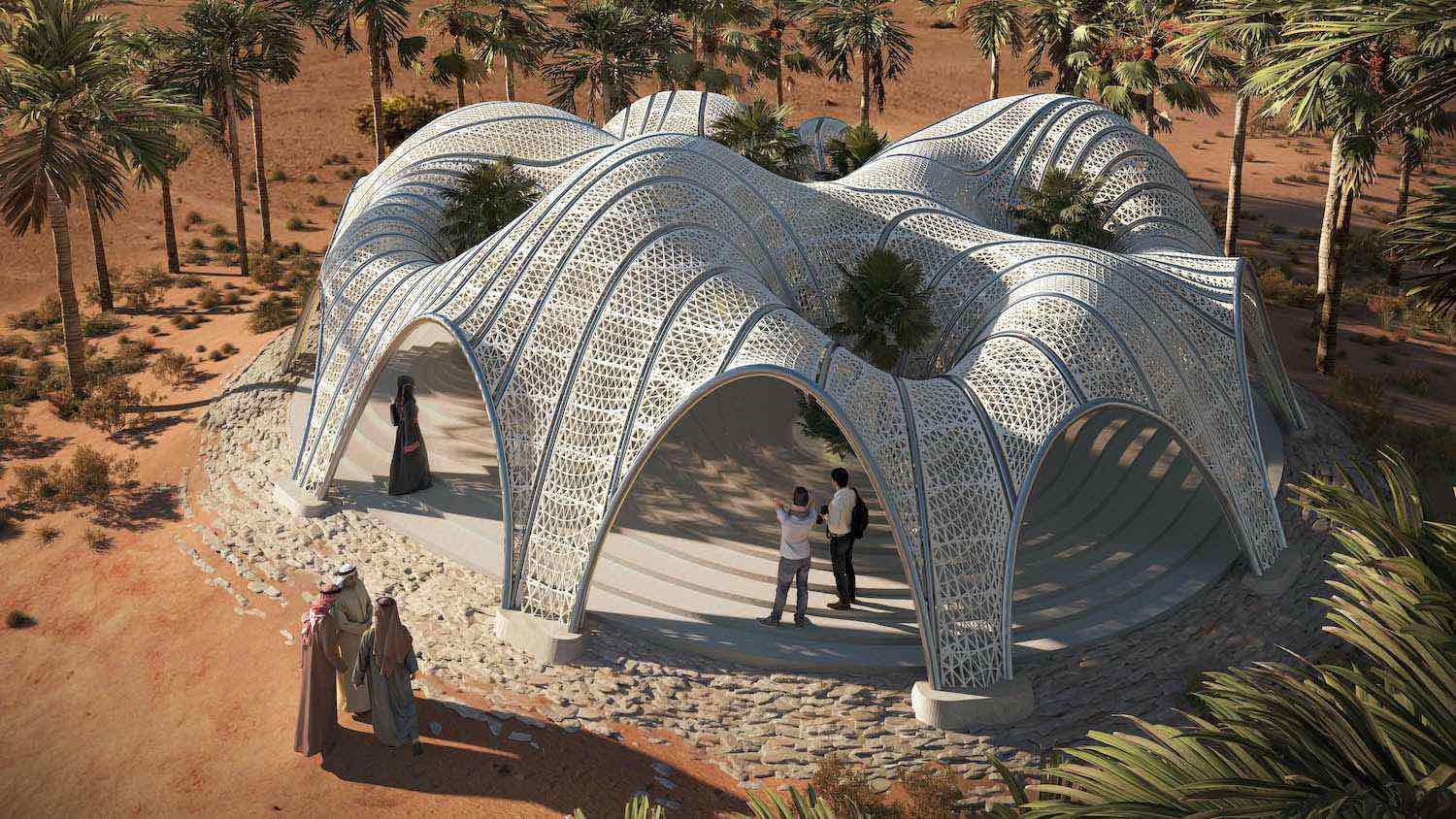Description
Pavel Hnilička Architects+Planners: The new tennis club pavilion is located in the very heart of Prague's district of Ořechovka. It was built on the site of a small wooden clubhouse that stood there during the First Republic, which was replaced in the 1980s by a temporary building of prefabricated site units. This 'temporary structure' lasted for almost 50 years and has deteriorated badly.
The wooden structure is intentionally lightweight and built on columns like a garden pavilion in the middle of a park. Its expression evokes spa gazebos and colonnades associated with tranquility. The building uses classic architectural elements such as a plinth, a column row and a lintel with a cornice. The wooden oak columns are load-bearing and use the proven principle of entasis for their elegance. They are supported by architraves with simplified friezes and then a coupled frame ceiling structure. The protruding rafters taper at their ends to soften the visual effect of the roof edge. The emphasis is on quality, durability and craftsmanship of materials.
The above-ground part of the tennis club is defined by a glass café open on three sides with access to the changing rooms and the playground, followed by the clubhouse, public toilets and storage rooms. A spiral staircase leads up to the rooftop viewing terrace. At first glance, it is not noticeable that the upper part of the building covers the existing brick substation. In the lower part, the changing rooms and toilets are hidden under the adjacent terrain to make the building appear optically smaller and to integrate it into the context of its surroundings.
Wide stairs for seating are placed on the axis of Machar Square, facing the liveliest part of the street. To the east, the terrain is raised, expanding the outdoor café area that has become very popular for pétanque.
The project was constructed by ARCUS-Růžička.




































About studio / author
Pavel Hnilička Architects+Planners / PHAP
The PHAP studio was founded in Prague in 2003 by architect Pavel Hnilička, winner of the 2008 Grand Prix for Architecture, former president of the Czech Chamber of Architects and author of several acclaimed publications on urban planning (author of Urban Sprawl, co-author of Density and Economics of Cities and Prague Building Regulations 2018).
The studio currently has 30 employees and cooperates with leading Czech developers, municipalities and private clients. PHAP specializes not only in the design and implementation of buildings at all stages of project documentation, but also in the preparation of zoning, volume and regulatory studies and plans. In its projects, the studio emphasizes not only quality, aesthetics and functionality, but also ecological approaches and overall sustainability.
Among the most important recent projects are those that emerged from winning architectural or urban planning competitions. These include, in particular, the new headquarters of Česká spořitelna in Prague´s Smíchov, the reconstruction of Victory Square in Prague's Dejvice, the revitalization of Senovažné Square in České Budějovice, the project of the new Municipal Office and Community center in Dobřichovice in Central Bohemia, and the creation of a zoning plan for České Budějovice. PHAP also often works on smaller-scale projects within the regions of the Czech Republic or in Slovakia.
Since 2003, the studio has worked on almost two hundred projects.





